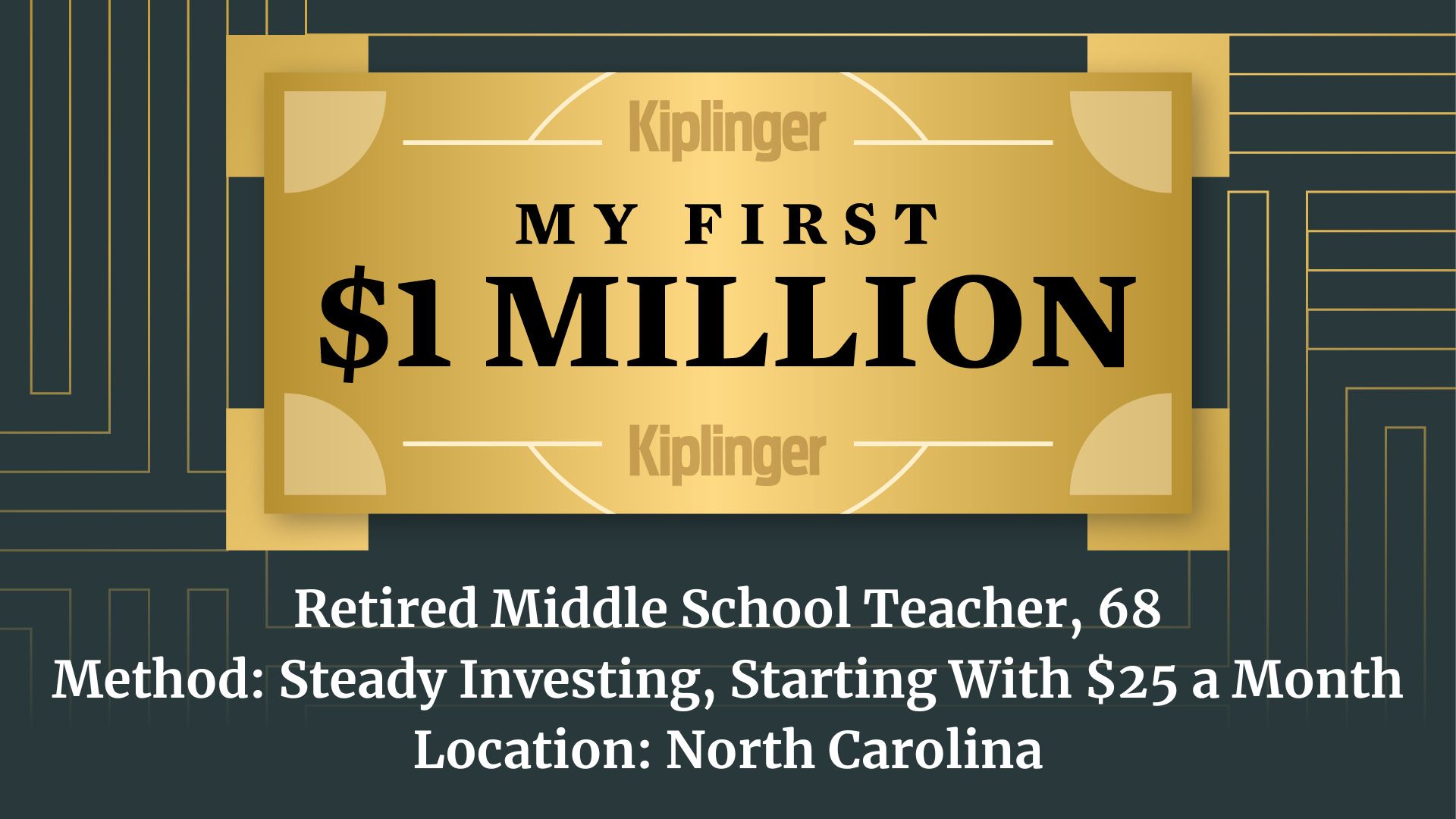25 Fastest Growing Jobs in the U.S.
Chief growth officers, government program analysts and environment health safety managers are the fasting-growing jobs of the last 5 years, according to a new LinkedIn study.


Chief growth officer, government program analyst and environment health safety manager are among the fastest-growing jobs over the last five years, according to LinkedIn's annual Jobs on the Rise list.
Notably, more than 68% of this year’s Jobs on the Rise didn’t exist 20 years ago, including seven in the top ten.
The U.S. job market has gone through broad changes in recent years, with the onslaught of work-from-home opportunities and rising wages to the dizzying influx of AI tools and automation. As of mid 2024, the labor market is looking good. But whether it continues to maintain strength throughout the year remains to be seen.
From just $107.88 $24.99 for Kiplinger Personal Finance
Become a smarter, better informed investor. Subscribe from just $107.88 $24.99, plus get up to 4 Special Issues

Sign up for Kiplinger’s Free Newsletters
Profit and prosper with the best of expert advice on investing, taxes, retirement, personal finance and more - straight to your e-mail.
Profit and prosper with the best of expert advice - straight to your e-mail.
Even so, with a number of U.S. job seekers considering a career change in 2024, it makes sense to find out which jobs show the most or least potential for growth.
Are you in the market for a new job? We’ve highlighted the top 10 fastest-growing jobs in 2024 (with a mention of the 15 next fastest-growing fields), according to data from LinkedIn and ZipRecruiter.
1. Chief Growth Officer
Chief growth officers create and execute an organization’s strategies for driving revenue by expanding market presence. Common industries include technology and the Internet, IT services and consulting and advertising services. Current gender distribution: 27% female; 73% male.
2. Government Program Analyst
Government program analysts evaluate the efficiency and effectiveness of public sector programs. Most common industries include administration of justice, transportation equipment manufacturing and insurance. Current gender distribution: 61% female; 39% male.
3. Environment Health Safety Manager
Environment health safety managers, or HSE managers, ensure companies foster a safe and sustainable workplace for employees. Most common industries include oil and gas, wholesale building materials and electrical and electronics manufacturing. Current gender distribution: 25% female; 75% male.
4. Director of Revenue Operations
Also known as Director of Revenue Management, the director of revenue operations helps oversee businesses' revenue generation practices. Most common industries include technology and the Internet, IT services and consulting and advertising services. Current gender distribution: 39% female; 61% male.
5. Sustainability Analyst
Sustainability analysts, sometimes known as environmental analysts, evaluate an organization's environmental, social and governance (ESG) efforts. Common industries include business consulting and services, real estate and food and beverage manufacturing. Current gender distribution: 63% female; 37% male.
6. Advanced Practice Provider
Also referred to as a nurse practitioner or physician assistant, advanced practice providers are licensed medical professionals who provide primary care services for patients. Most common industries may include medical practices, higher education and insurance. Current gender distribution: 76% female; 24% male.
7. Vice President of Diversity and Inclusion
Vice presidents of diversity and inclusion cultivate inclusive workplaces by designing and implementing policies. Most common industries include non-profit organizations, higher education and civic and social organizations. Current gender distribution: 70% female; 30% male.
8. Artificial Intelligence Consultant
Artificial intelligence consultants advise organizations on the implementation of AI technologies in their business operations and product offerings. Most common industries include technology and the Internet, IT services and consulting and business consulting and services. Current gender distribution: 26% female; 74% male.
9. Recruiter
Recruiters are also known as talent acquisition specialists in some companies. In the role, they source, evaluate and help hire qualified candidates. Most common industries include IT services and consulting, staffing and recruiting and business consulting and services. Current gender distribution: 54% female; 46% male. It’s worth noting that recruiters specializing in sales, legal and healthcare have seen especially high job growth.
10. Artificial Intelligence (AI) Engineer
AI engineers develop, implement and train AI models and algorithms. Most common industries include technology and the Internet, IT services and consulting and transportation equipment manufacturing. Current gender distribution: 19% female; 81% male. According to the U.S. Bureau of Labor Statistics (BLS), AI engineers will see 23% growth in the next eight years, much faster than average.
Other fields likely to see job growth in 2024
Other jobs that round out LinkedIn’s 25 Jobs on the Rise list and show potential for accelerated growth in 2024 include:
- External Communications Manager
- Product Security Engineer
- Physical Therapist
- Grants Program Manager
- Director of Land Acquisition
- Transmission Planning Engineer
- Influencer Marketing Manager
- Director of Development Services
- Director of Legal Operations
- Workforce Development Coordinator
- Head of Public Safety
- Plant Director
- Infection Preventionist
- Heads of Partnerships
- Instructional Systems Specialist
Nearly every role in LinkedIn’s top 25 offers hybrid or remote job opportunities requiring differing levels of education or training. But competition for these roles can be fierce, with LinkedIn reporting that job search intensity, which measures the number of people actively applying for jobs, is up 21% yearly.
Related Content
Profit and prosper with the best of Kiplinger's advice on investing, taxes, retirement, personal finance and much more. Delivered daily. Enter your email in the box and click Sign Me Up.

For the past 18+ years, Kathryn has highlighted the humanity in personal finance by shaping stories that identify the opportunities and obstacles in managing a person's finances. All the same, she’ll jump on other equally important topics if needed. Kathryn graduated with a degree in Journalism and lives in Duluth, Minnesota. She joined Kiplinger in 2023 as a contributor.
-
 Holiday Tax Scams: 'Tis the Season to be Wary
Holiday Tax Scams: 'Tis the Season to be WaryTax Scams Navigating tax tricks of the holiday season may be daunting, but don't let that destroy your festive spirit
-
 Metro by T-Mobile Is Giving Away This Samsung Galaxy A16: Which Plans Are Eligible?
Metro by T-Mobile Is Giving Away This Samsung Galaxy A16: Which Plans Are Eligible?Metro by T-Mobile is offering free Samsung Galaxy A16 phones on eligible plans right now. Here’s how the deal works.
-
 I Drive and Collect Classic Cars: Here’s How I Got Started
I Drive and Collect Classic Cars: Here’s How I Got StartedAre classic cars a hobby or an investment strategy — or both? Either way, the vintage car scene is much cooler and more affordable than you think.
-
 Metro by T-Mobile Is Giving Away This Samsung Galaxy A16: Which Plans Are Eligible?
Metro by T-Mobile Is Giving Away This Samsung Galaxy A16: Which Plans Are Eligible?Metro by T-Mobile is offering free Samsung Galaxy A16 phones on eligible plans right now. Here’s how the deal works.
-
 I Drive and Collect Classic Cars: Here’s How I Got in the Game Without Spending a Fortune
I Drive and Collect Classic Cars: Here’s How I Got in the Game Without Spending a FortuneAre classic cars a hobby or an investment strategy — or both? Either way, the vintage car scene is much cooler and more affordable than you think.
-
 My First $1 Million: Retired Middle School Teacher, 68, North Carolina
My First $1 Million: Retired Middle School Teacher, 68, North CarolinaEver wonder how someone who's made a million dollars or more did it? Kiplinger's My First $1 Million series uncovers the answers.
-
 4 Financial To-Dos to Finish 2025 Strong and Start 2026 on Solid Ground
4 Financial To-Dos to Finish 2025 Strong and Start 2026 on Solid GroundDon't overlook these important year-end check-ins. Missed opportunities and avoidable mistakes could end up costing you if you're not paying attention.
-
 9 Types of Insurance You Probably Don't Need
9 Types of Insurance You Probably Don't NeedFinancial Planning If you're paying for these types of insurance, you may be wasting your money. Here's what you need to know.
-
 I'm an Insurance Pro: It's Time to Prepare for Natural Disasters Like They Could Happen to You
I'm an Insurance Pro: It's Time to Prepare for Natural Disasters Like They Could Happen to YouYou can no longer have the mindset that "that won't happen here." Because it absolutely could. As we head into 2026, consider making a disaster plan.
-
 The Future of Philanthropy Is Female: How Women Will Lead a New Era in Charitable Giving
The Future of Philanthropy Is Female: How Women Will Lead a New Era in Charitable GivingWomen will soon be in charge of trillions in charitable capital, through divorce, inheritance and their own investments. Here's how to use your share for good.
-
 The Retirement Donor's Checklist: Key Deadlines by Gift Type
The Retirement Donor's Checklist: Key Deadlines by Gift TypeRetirees have some charitable contribution options that can help avoid spikes in income from RMDS and capital gains.